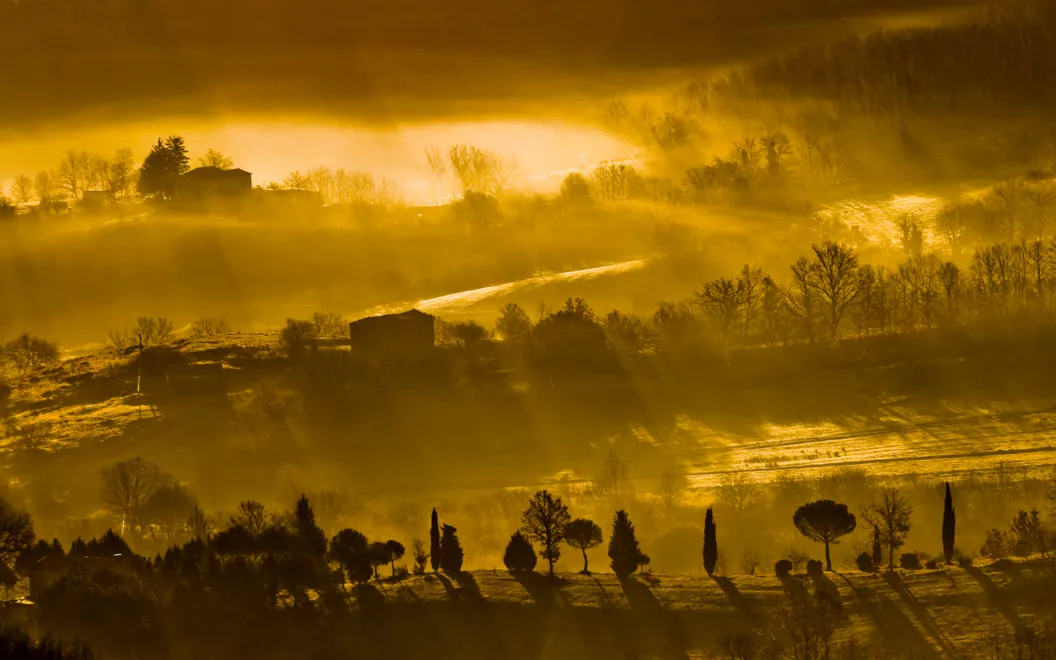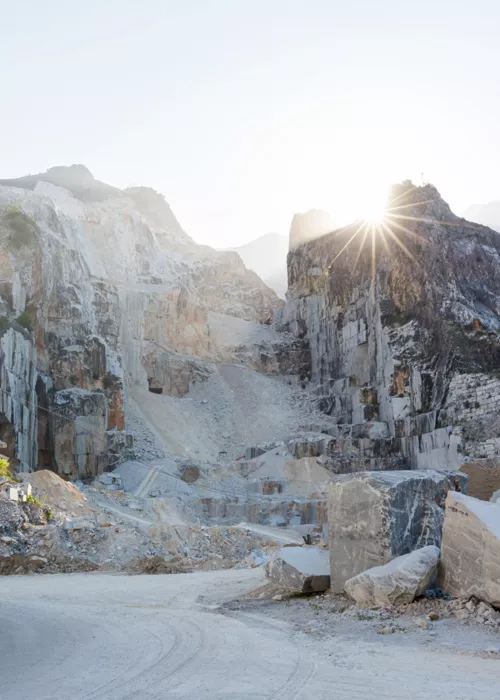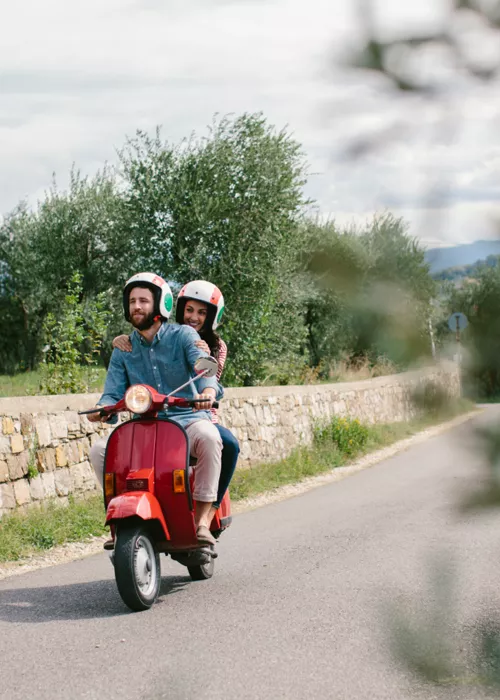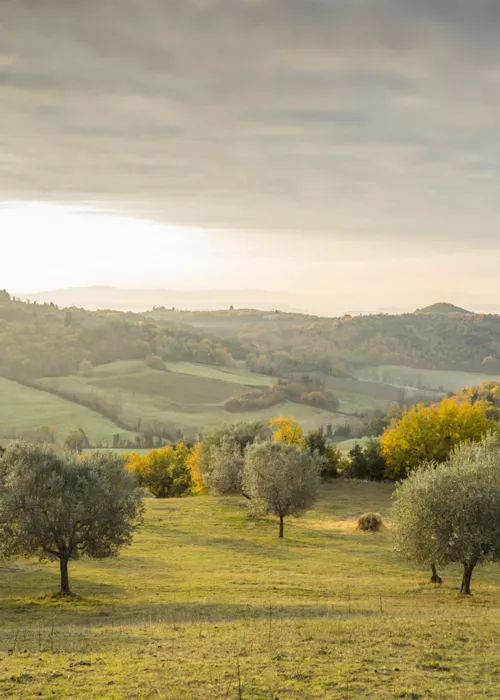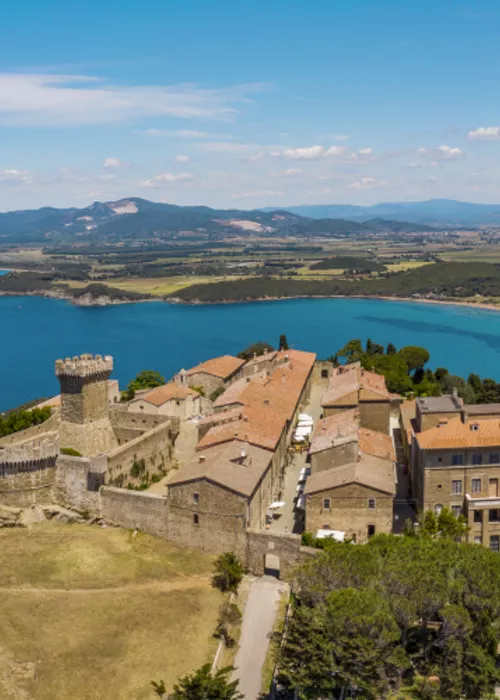Suvereto

The cork oaks that once dotted the area abundantly gave their name to the village, which stands on a hill at the edge of the Colline Metallifere and on which the Orange Flag of the Italian Touring Club flies. Still partly enclosed by mediaeval walls, it has a winding urban layout that among the stone alleys and cobbled streets reveals beautiful views. The church of San Giusto is a welcome sight: right in front of the mediaeval entrance gate, it was built in 1189 on an earlier 10th-century church. Other notable buildings are the 13th-century town hall with a beautiful corner loggia and crenellated tower, the 18th-century Church of Our Lady and the cloister of St Francis. What remains of the Rocca aldobrandesca, founded in the 9th century, overlooks the maze of alleys with stone houses, vaults, stairways.
Here in the Alta Maremma, where the atmosphere is still peasant, and it is easy to indulge in a cuisine that is simple but full of flavour. Typical dishes to try are the tortelli maremmani, stuffed with spinach, ricotta cheese, nutmeg and Parmesan cheese, acquacotta, a vegetable soup (mainly chard, tomato and carrot) accompanied by toasted bread croutons and a poached egg, and the ever-present pappardelle with wild boar ragù. And then there are the tasting of cured meats, including Cinta Senese Dop, and cheeses such as Pecorino Toscano Dop cheese from Follonica, at various ages;
Le Biancane Nature Park

An extraordinary area in which you can experience many natural geothermal manifestations: white vapours and boiling water coming out of the ground, boiling mud, the colour of the earth ranging from deep red to ochre to white, and flora which is certainly unusual. In the park, the loop route starts from the hamlet of Lagoni di Monterotondo Marittimo - where the presence of boric acid in the geothermal waters was discovered by the German chemist and pharmacist Hubert Francesco Hoefer in 1777 - and touches Sasso Pisano, where an archaeological complex with the remains of an ancient Etruscan thermal bath complex is also visible. At the end of the tour, you will visit the Mubia - GeoMuseo delle Biancane, which offers a virtual journey into the innermost reaches of the Earth and insights through interactive workstations.
Castelnuovo di Val di Cecina

The mediaeval centre of the village, perched on the hill, stands out among chestnut woods. It can be recognised immediately, even before arriving there, by its curious pine-cone shape. A TCI Orange Flag, the village is a tangle of narrow streets, among which you will be amazed at the mediaeval gates and marvellous views of the entire valley.
Near the small hamlet of Montecastelli you will discover the Romanesque parish church of Saints Philip and James, an Etruscan hypogeum dating back to the 1st century BC, and the remains of copper mines, inactive since 1941.
Abbey of San Galgano

Secluded in the middle of the countryside, it is among the most distinguished Cistercian-Gothic architecture in Italy. The impressive exposed brick and travertine shell is astonishing. The abbey was built between 1224 and 1288, but famine, pestilence, looting, and finally a lightning strike, led to its abandonment in the 16th century. The majestic open-air structures remain, the interior invaded by grass and the pointed arches as a frame for the greenery all around: a fictional image, steeped in mysticism, among the most famous in Tuscany.
Hermitage of Montesiepi

Very close to the abbey of San Galgano, it is an original Romanesque church with a perfectly circular layout and a small bell gable. Inside, concentric bands of terracotta and travertine characterise the structure of the vault; in the centre, the rock in which Galgano, as a sign of renouncing his secular life, is said to have plunged a sword (now protected by a shrine), evoking legends and mysterious folk tales over the centuries. Ambrogio Lorenzetti's frescoes with the story of the saint painted in the chapel are now preserved in the S. Maria della Scala Museum in Siena, where they are exhibited regularly.
Montieri

The highest municipality in the Colline Metallifere, it stands at 1051 m amidst thick forests of oak, beech and chestnut trees. For centuries a mining centre for the extraction of copper and silver (the etymology refers to Mons aeris, mountain of copper), as evidenced by tunnels found in the surrounding area and used for mining, it has a small historical centre that opens onto an airy panorama. Still visible today are three towers of the city walls, tower-houses from the 13th century and the fortress, to which the old prisons were also attached. The famous Montieri chestnut has been the protagonist of the "National Chestnut Flour Award" for years.
Massa Marittima

We end the tour of the Colline Metallifere with a striking sight: Massa Marittima will not leave you indifferent. Piazza Garibaldi, spacious and strongly structured, is among the masterpieces of mediaeval town planning for the balance and harmony of the spatial solutions that create angles, perspectives and scenic effects around a complex of equally marvellous mediaeval buildings. From the Cathedral to the Praetorian Palace and the Bishop's Palace, or the Palazzetto della Zecca and the Sienese fortress and the Clock Tower, which you can climb to be mesmerised by the panorama.
Finally, the centre is the only one where the Maremma onion has been cultivated for over a hundred years.


